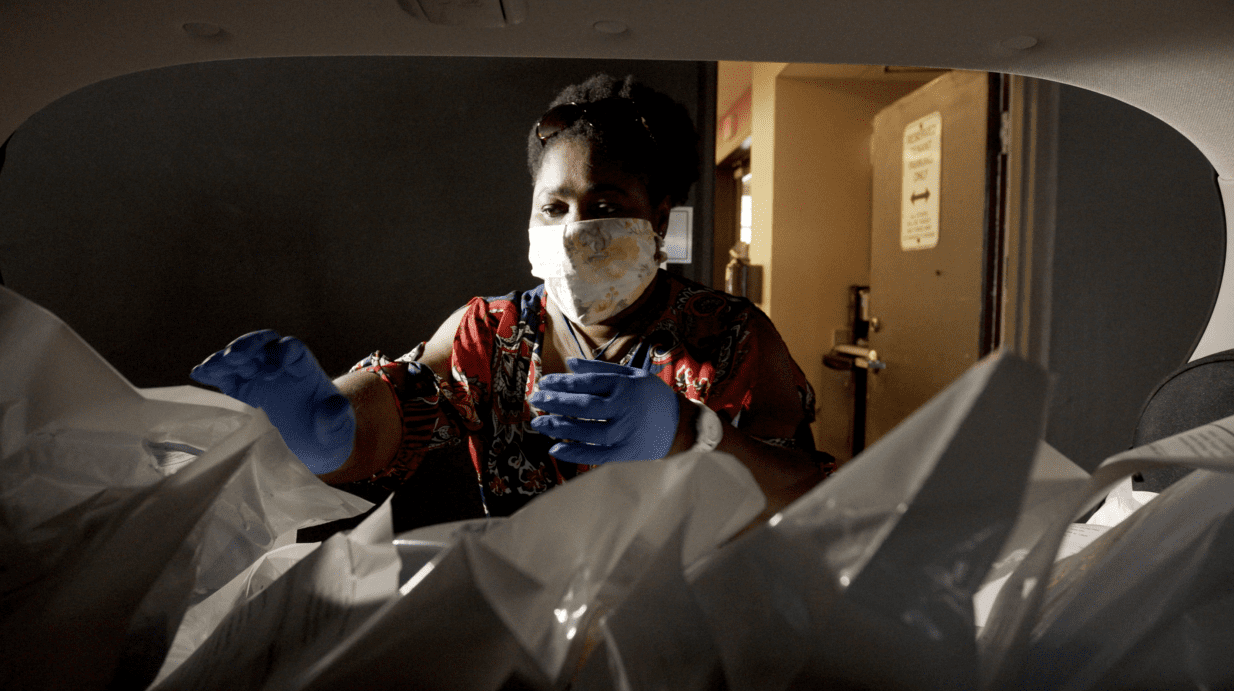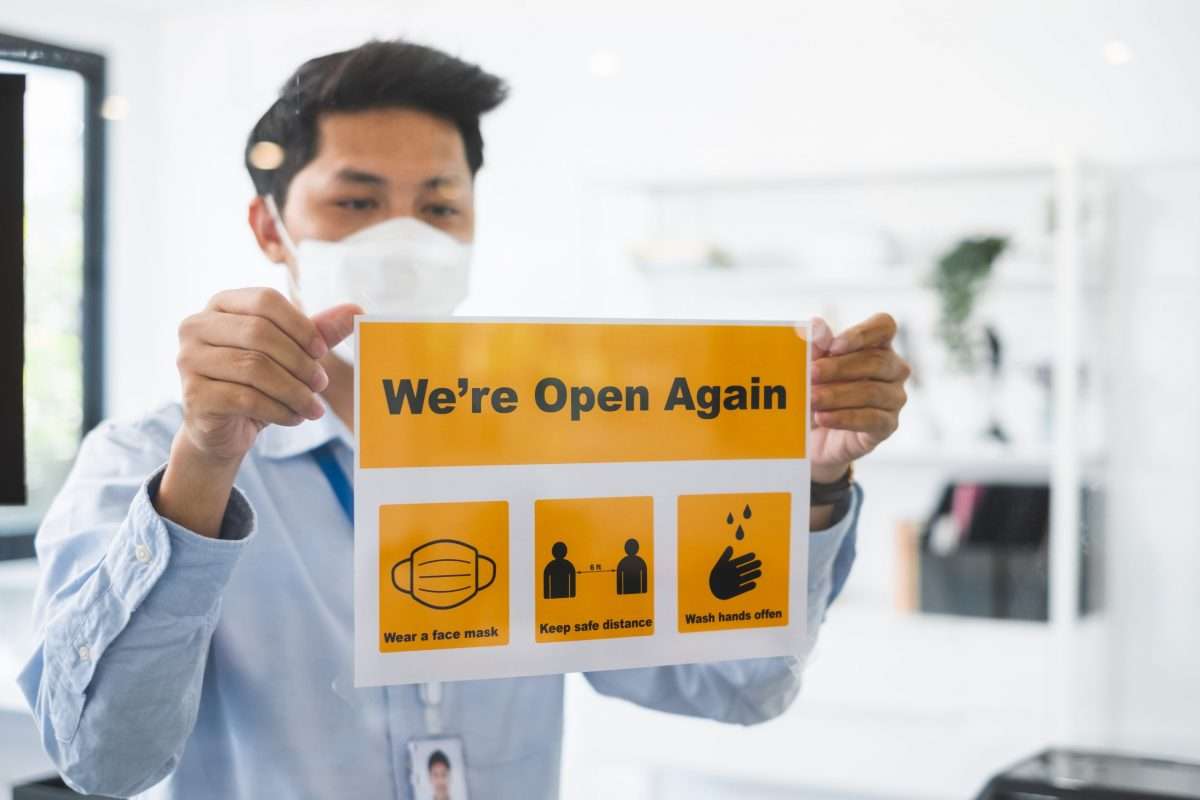
Blog
Reflecting on COVID-19: Five key takeaways for the sector
In March 2020, we wrote a letter to the ONN network titled “Nonprofits on the front lines of COVID-19.” It was the first communication to our sector about what the pandemic might mean for us – our work, staff, volunteers, families, and communities. We knew that whatever was going to happen, it would cause chaos and uncertainty for the nonprofit sector. I knew that the sector we so deeply support and care about at ONN, was about to be hit with something that none of us had prepared for, or could have even imagined.
Our key message then: “We have your back.”
So much has happened in these last two years. They have felt like a lifetime, and at the same time, like they happened in the blink of an eye. Initially we thought our offices would be closed for a three-week lockdown, but that turned into two years of restrictions, stay-at-home orders, new waves, and more. In my email to the ONN team, I said that our office would reopen April 4, 2020 – how naive! During the pandemic, nonprofits we cared about closed, shifted, pivoted, and excelled. We individually faced illness, fear, grief, and a constant up and down of our moods and capacity based on the daily case counts. The pandemic also helped shed a light on existing racial inequities because they were being exacerbated during this time. Part of our grief and anger also came from continued police violence, anti-Black racism, and the gendered impact of COVID-19.
It’s been emotionally exhausting, but there were still times when we celebrated, experienced successes, forged new relationships and partnerships, and supported one another.
There is so much to learn and unpack from the last two years – and here at ONN we are still looking to find the time to really reflect and capture all that we have experienced since 2020. But there are some key takeaways that we want to capture now – and advocate to keep them on the front burner as we recover, recreate, and transform our sector.
1. Government can act quickly.
We learned during these last two years that governments can move fast and efficiently when they have to. Programs were created within weeks, not months or years; dollars were distributed quickly; online transactions (including e-signatures!) were accepted; flexibility was provided to accommodate emerging issues in communities. Were these programs and policies perfect? Of course not, but most were useful and lessons were learned. Have our expectations changed with respect to government decision-making? Absolutely!
2. Trust-based funding and general operating support are critical to our sector’s future.
We learned there is ample evidence that funders (foundations, donors, and governments) can provide support and that community organizations will use the money efficiently, effectively, and responsibly. We learned to question – why does a funding application need to be 20+ pages, with the entire project/program thought out before we’ve even tried it? Why does it take nine months to get a response to a funding proposal? Why can’t we use funding to invest in technology so our people have the best tools at their disposal? Why aren’t reserves appropriate when it’s not just raining, but pouring? Why can’t we make the decisions about where money is most needed and best meets our mission instead of letting funders and donors do that for us?
Now, we expect our funders to have less red tape and paperwork, to focus more on outcomes, to recognize the importance of general operating support and the investment in technology, to allow for reserve funds, to trust our expertise on the communities we serve, and to be true partners.
3. Our people are our biggest strength.
We learned (or relearned) something we already knew. Our people, paid staff, and volunteers, are what makes our sector function and they are not distinct from the communities we serve and often share similar lived experiences. They lead, deliver, teach, create, educate, coach, counsel, manage, and so much more. Our sector’s people have done more for our communities during the pandemic than any government ever could have. They made sure people were sheltered and fed. That mental health supports were available. That there were creative outlets and connections during lockdown. That physical activity was available. Nonprofit sector workers ensured that everyone had supports, from infants to our elders. They were on the front lines and behind the scenes, working in communities and working from home. And we learned that society takes them for granted.
Now, we expect that nonprofits will prioritize decent work for their staff and fight for equitable compensation, benefits, and professional development. We expect that volunteers will be supported, well managed, and recognized. We expect that funders and governments will acknowledge and invest in the valuable work our sector’s people undertake on behalf of our communities.
4. Equity and racial justice must be centred in rebuilding.
The “double pandemic” of systemic racism has been abundantly clear throughout the pandemic. From COVID infection rates to the vaccine rollout, to who could comfortably work from home and who were on the front lines of essential services, Black, Indigenous and racialized communities have been disproportionately impacted. To address racism and colonialism, there is no simple checklist or training to complete. We need an absolute rethinking and recreation of our social and economic systems that are entrenched in systemic racism and white supremacy. This has been an eye-opening lesson for me personally to learn as a white, middle-aged, nonprofit leader. I have had (and continue) to face my discomfort talking about race, privilege and power, and naming white supremacy.
Now, we expect that not only should we name systemic racism, but recognize that we all have a role to play – government, funders, nonprofit organizations, and all community members – in addressing it. And that all nonprofits, regardless of size, scope, breadth, mission, can be part of the solution and must prioritize an equitable recovery above all else.
5. Collective, networked advocacy works.
We knew the benefits of collective advocacy before but the pandemic has made it crystal clear that a network model that focuses on building relationships, not delivering transactions, is the best advocacy approach for our sector. Relationships have been built, silos torn down, successes and challenges shared. It’s hard work and doesn’t replace the mission-focused work of individual organizations, but working together, sharing the work and the results has helped us all serve our communities better.
Now, we expect that networks will be supported, accessed, and replicated. That lessons we have all learned can be shared. We expect our networks to be based on reciprocity, authenticity, shared commitments, and a shared value that we are stronger when we work together.
In March 2020, we said, “Our sector – and our partners and supporters – can model the way and enable the most important work in our communities to continue – even AND especially during challenging times. Keep us posted. We’ve got your back.”
I fervently wish we had not experienced a worldwide pandemic that devastated so many communities and resulted in trauma, and many lives lost. I believe there is a transformational opportunity ahead of us – and that the future of the nonprofit sector is up to us. The pendulum doesn’t have to swing back – we can change its direction and we can model the way. We have new expectations to hold ourselves and others accountable to.
Two years later, we still want you to know – we’ve got your back.






